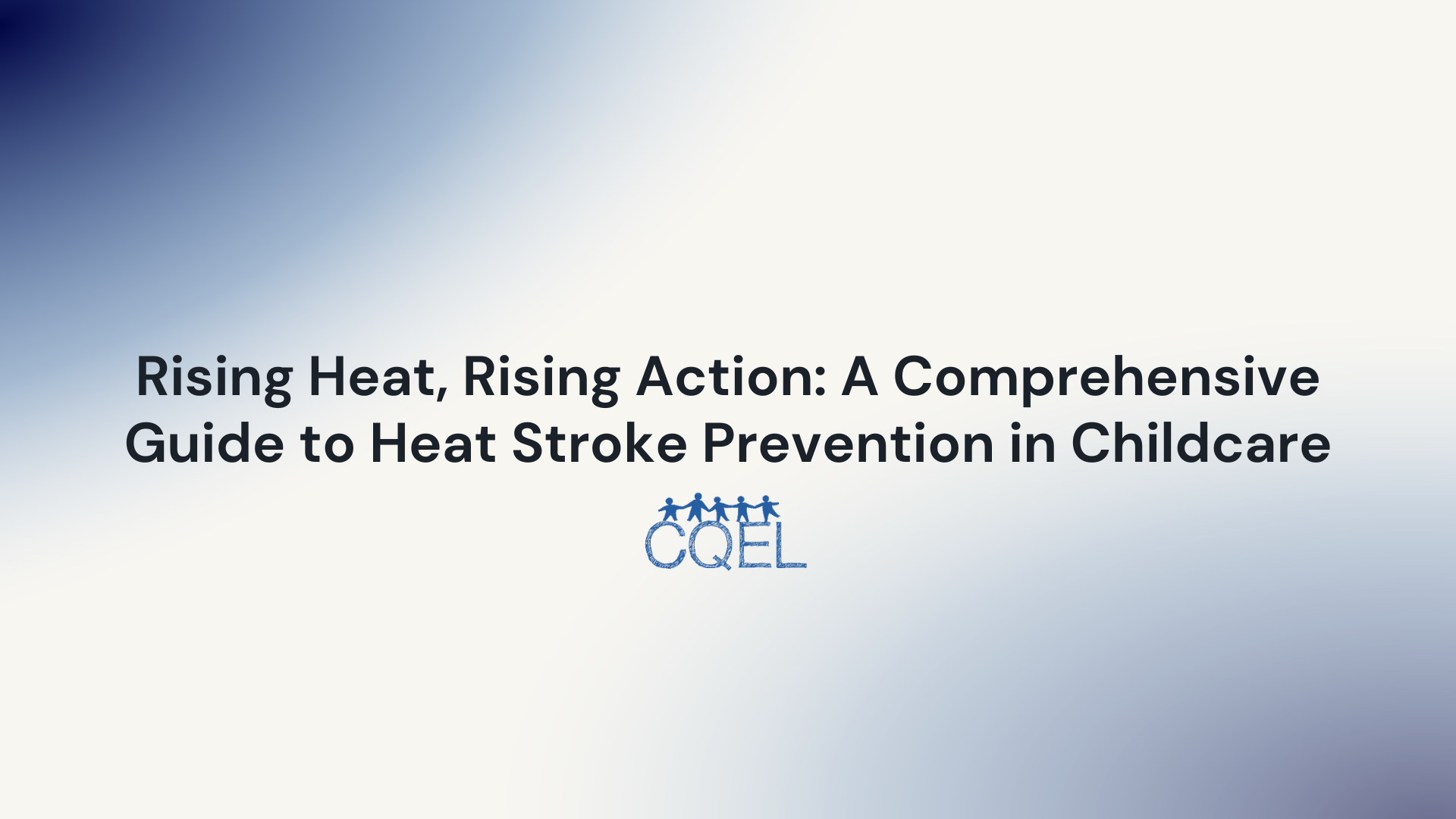Rising Heat, Rising Action: A Comprehensive Guide to Heat Stroke Prevention in Childcare
Children, especially those under four years old, are particularly vulnerable due to their underdeveloped thermoregulatory systems.

The Basics of Heat Stroke in Children: Heat stroke is a severe form of heat illness that arises when the body can't cool down effectively, leading to a dangerous rise in body temperature. Children, especially those under four years old, are particularly vulnerable due to their underdeveloped thermoregulatory systems. According to the American Academy of Pediatrics (AAP), it's essential for childcare providers to understand the symptoms, which include a high body temperature, rapid pulse, dizziness, nausea, confusion, and unconsciousness. Recognizing these symptoms promptly can make a difference between life and death.
Optimizing the Environment: Safe Play in the Sun: Ensuring a safe environment for children during hot days is crucial. While outdoor play is beneficial for children's development, during heatwaves, it's imperative to limit outdoor activities, especially during peak heat hours (10 a.m. to 4 p.m.). The Environmental Protection Agency (EPA) recommends creating shaded play areas, using sun hats and light-colored clothing, and frequently applying sunscreen on children. Additionally, the incorporation of water play can help in reducing body temperatures while allowing kids to have fun.
Hydration is Key: Encouraging Fluid Intake: Dehydration is a primary precursor to heat-related illnesses. It's imperative to keep children well-hydrated. HealthyChildren.org, an AAP resource, emphasizes offering water frequently, even if children don't express thirst. Incorporating fruits with high water content like watermelons, strawberries, and cucumbers in their diet can also help in maintaining hydration. For infants, increasing the frequency of breastfeeding or bottle-feeding might be necessary.
Education and Training: Equipping Staff with Knowledge: All staff in childcare centers should be well-informed about heat-related illnesses. Regular training sessions can help in keeping the knowledge fresh. Resources like CDC's Warning Signs and Symptoms of Heat-Related Illness can serve as a guide for understanding and identifying the initial signs of heat illnesses. Quick response and medical attention can prevent conditions from worsening.
Engaging with Parents: A Collaborative Approach: Collaboration with parents is paramount. Inform them about the measures you're taking to ensure their child's safety and ask them to dress their children in appropriate attire. Distributing resources, such as The Red Cross's Heat Wave Safety Checklist, can help parents understand the severity of the issue and equip them with the knowledge to prevent heat-related illnesses at home.
By acknowledging the threats posed by rising temperatures and taking proactive steps, childcare providers can create a safe, enjoyable, and educative environment for children. As the adage goes, "Prevention is better than cure." This couldn't be more accurate when it comes to safeguarding our young ones against the perils of heat.
